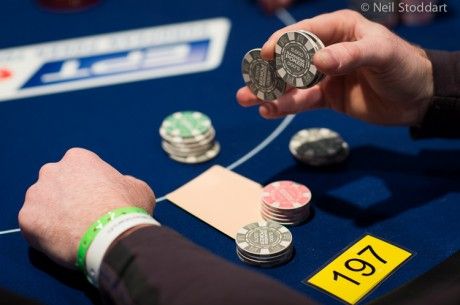Dealing With Hyper-Aggressive Opponents

We��ve all been bullied at the poker table. I don��t mean that someone has harassed or attacked us as a person, but rather within the game itself we��ve had encounters with aggressive players who through their bets and raises have pushed us out of countless hands.
In poker, you��re unable to seek help from others to fight back against the bully. You can��t politely ask the dealer to stop dealing them such good hands, or ask others at the table to help take down this tyrant �� those notions are simply absurd. In the fight against the table bully, you are alone.
But that doesn��t mean you don��t have weapons in your arsenal. Let��s look at some strategic considerations for how to combat an overly aggressive player who is pushing you out of pots and running over the table.
Practice Patience
The key concept to utilize against an extremely aggressive player is patience. An excessively active and aggressive player is playing a ton of hands, most of which are likely to be weak. An especially effective way to combat this style is to lie in wait, find a strong hand, and allow this player to bluff off his stack into you.
Generally, I prefer to be the one taking the lead in hands and not slow playing, but every scenario in poker is different and requires different tactics to find success. The point of this maneuver versus aggressive players is to get them to put more money in the pot as they bet their weaker hands or attempt to bluff you out of the hand. With a hyper-aggressive player, such a tactic can be highly fruitful.
A while ago this very situation happened to me during a $1/$2 cash game at Planet Hollywood in Las Vegas. There was an extremely aggressive player seated at my table and he was seemingly winning all of the pots. This player was pushing around the table and it was as if no one could do anything about it. Situations would arise where I would flop a straight draw and he would either make it too expensive to play or I would not catch and simply bleed chips to him.
So I waited. And waited. And waited some more. Eventually a hand came around where I was able to take him on heads up and it worked perfectly to my advantage.
Set the Trap
He opened �� as he had often been doing �� to $12 from middle position. The entire table folded around to my big blind and I looked down at A?6?. I called to see a flop.
The dealer fanned out a queen-high board with two hearts. I had a draw at the nuts and, given the right price, an opportunity to win a big hand against this player. I checked and he made a standard continuation bet, which I called. The turn then brought a third heart to the board, meaning I was sitting with the ace-high flush.
At this point in the game, my opponent had come over the top of me several times and each time I let my hand go. I had the feeling that he thought I was remarkably passive and easy to push off of hands. That��s why on this street I thought it would be smart to actually lead out with a small bet and act like it was a meek attempt at trying to steal the pot. I bet what was probably just $10 more than his bet on the flop. He instantly called.
The river brought a blank and I thought this was the point to act truly weak. I checked over to my opponent, hoping for him to make a big river bet to try and steal the pot. After he led out I was prepared to put in a check-raise. He did exactly that but made a much larger bet than anticipated �� he went all in! I instantly called with roughly $190 behind, rolled over my hand and reveled in my chance to say out loud ��Yeah, I have the nuts.��
He angrily flung his cards into the muck. I was awarded a double-up thanks to my patience. This was of course, an extreme example, as most players would never make a bet on the river that is so large. Even so, this tactic served its purpose as the hyper-aggressive player let his aggression get the best of him.
Conclusion
There are other ways of dealing with bullies at the poker table. In fact, just like often happens with bullies away from the table, showing a little aggression or standing your ground in response often can work to slow down aggressive players who are more comfortable dealing with more passive foes.
But showing patience, being selective when it comes to starting hands and situations, and finding spots to let the hyper-aggressive player pay you off can work, too.
When another player at the table longs desperately to be the table captain, playing the most pots and pouncing on the slightest hint of weakness, that can be an ample time to set a trap and let your opponent do your betting for you.
For more on the topic of dealing with aggressive opponents, see Nate Meyvis�� two-part series ��Fighting Back�� which begins with further tips for handling aggression from opponents perhaps more savvy than the one I faced here.
Get all the latest PokerNews updates on your social media outlets. Follow us on Twitter and find us on both Facebook and Google+!








